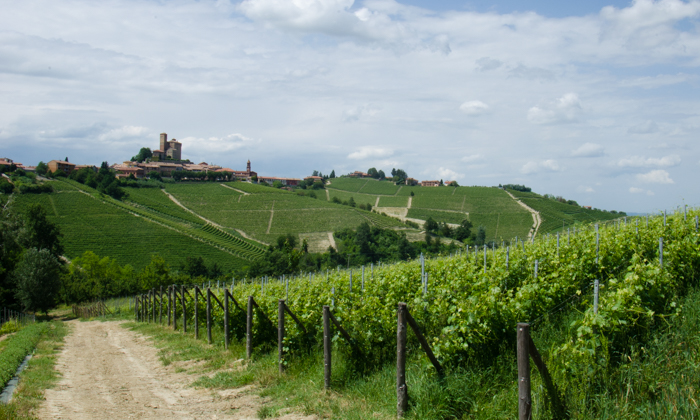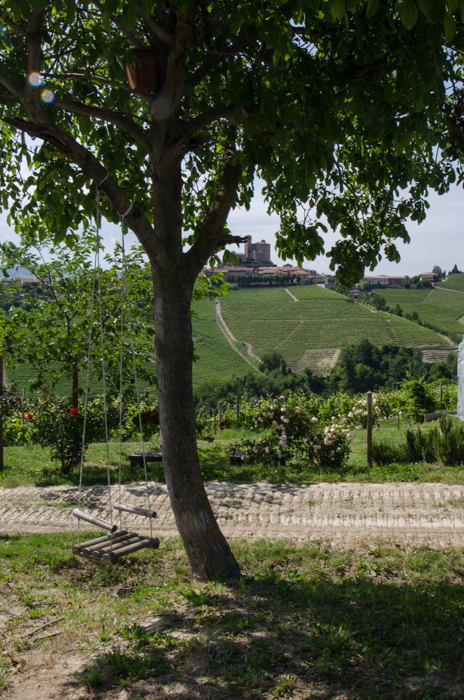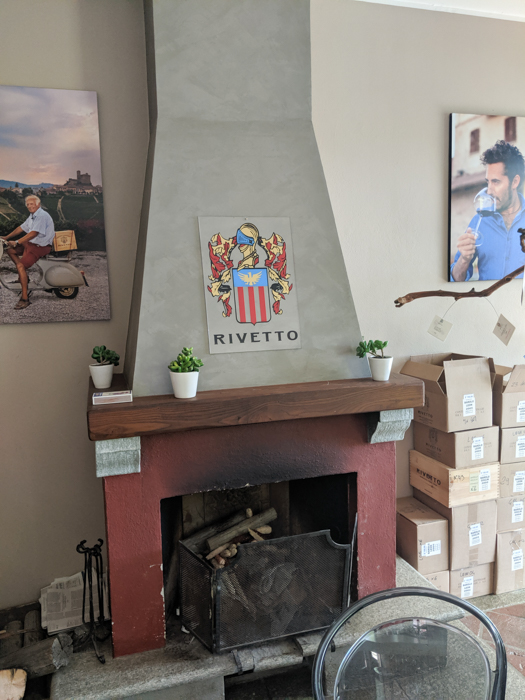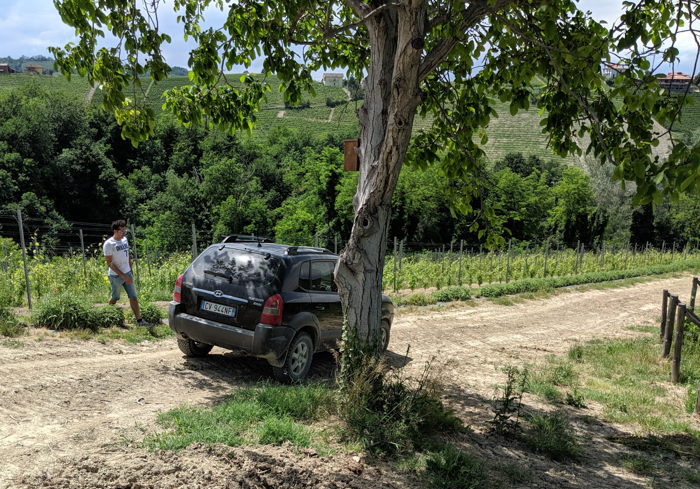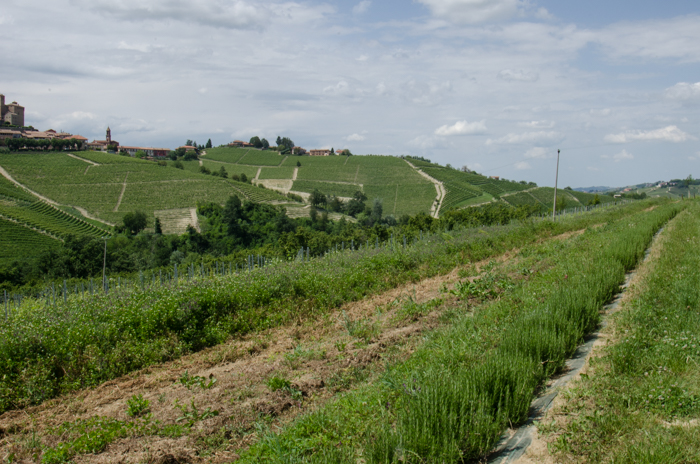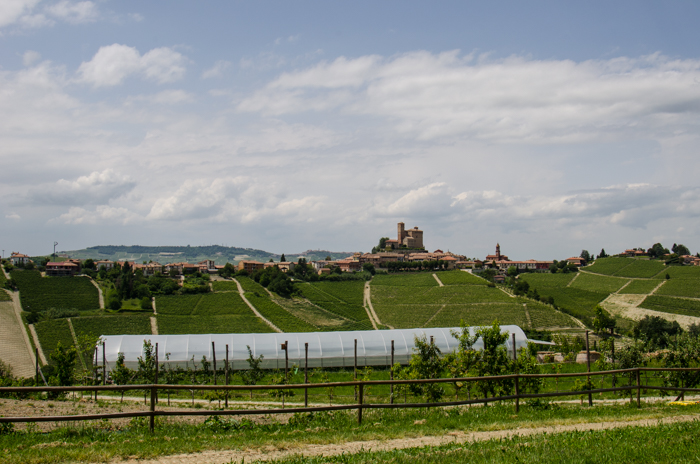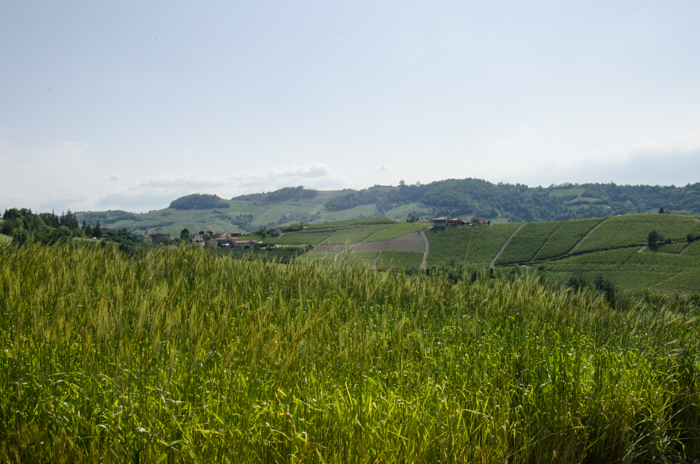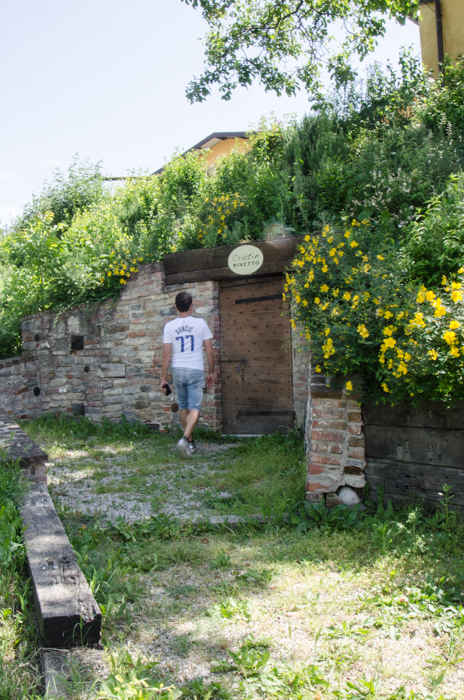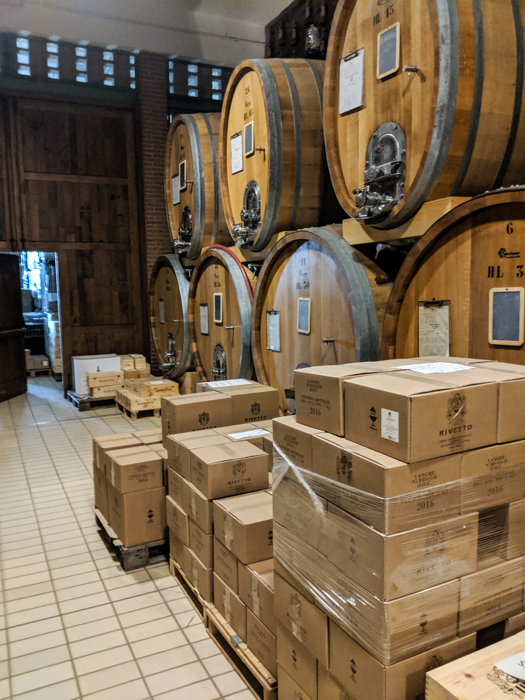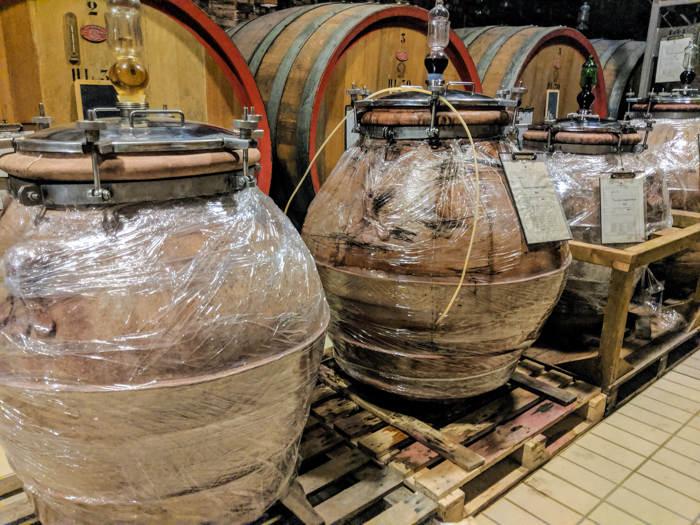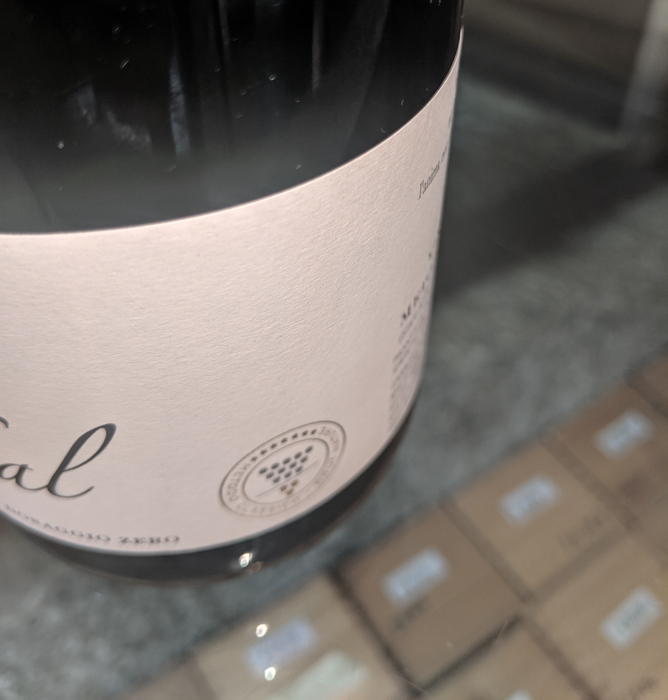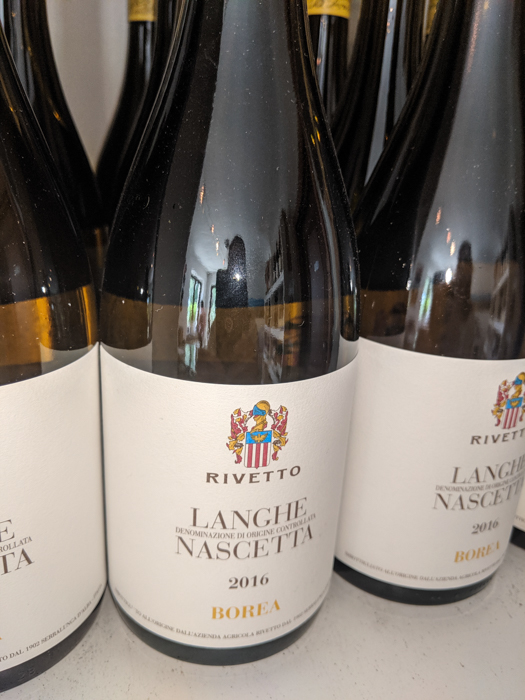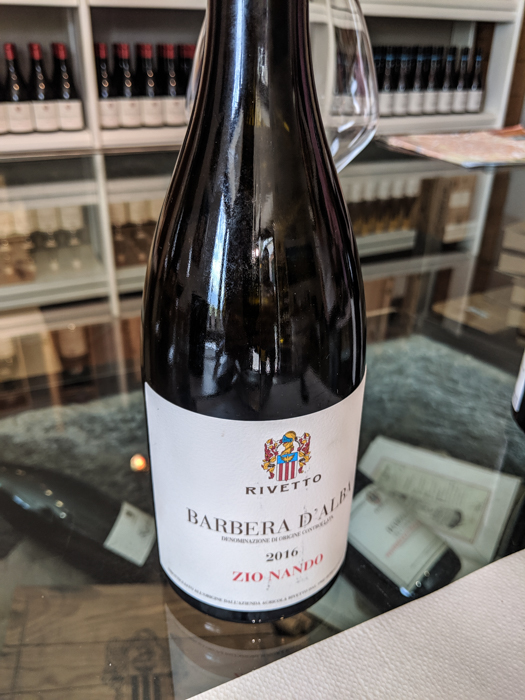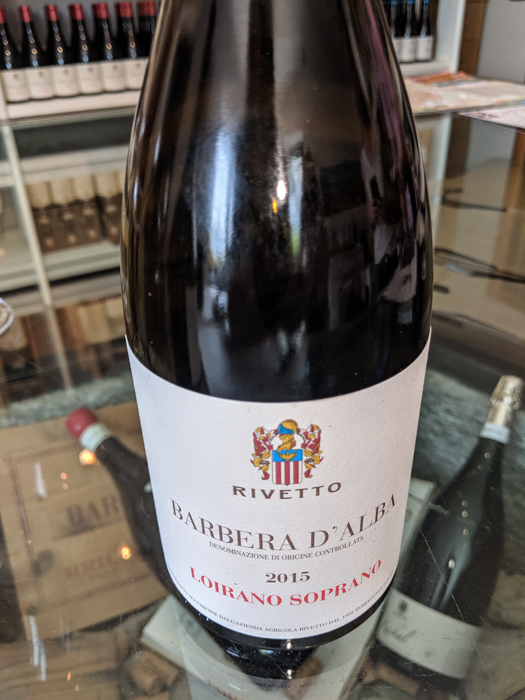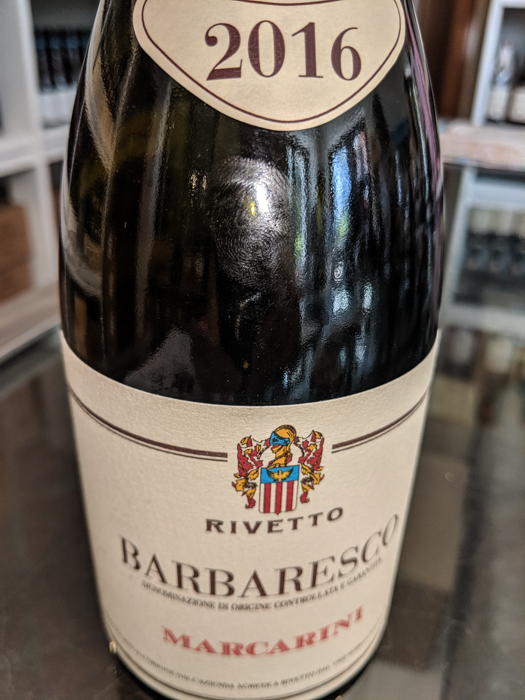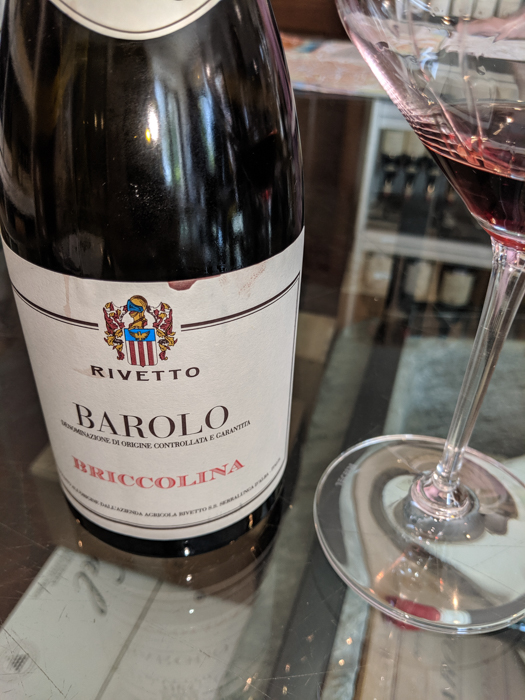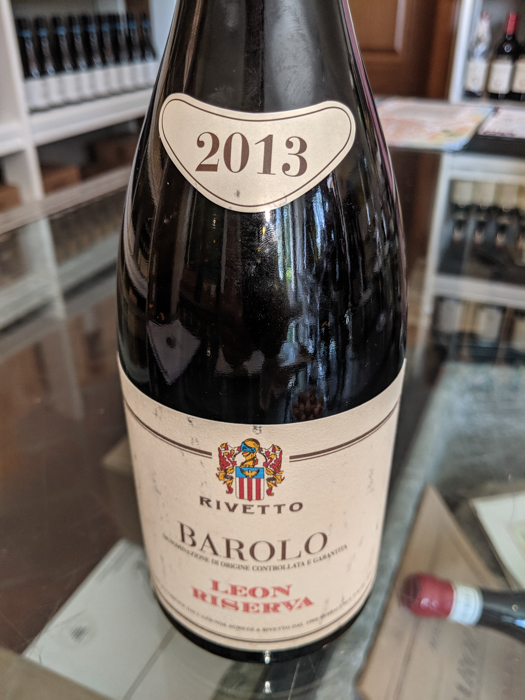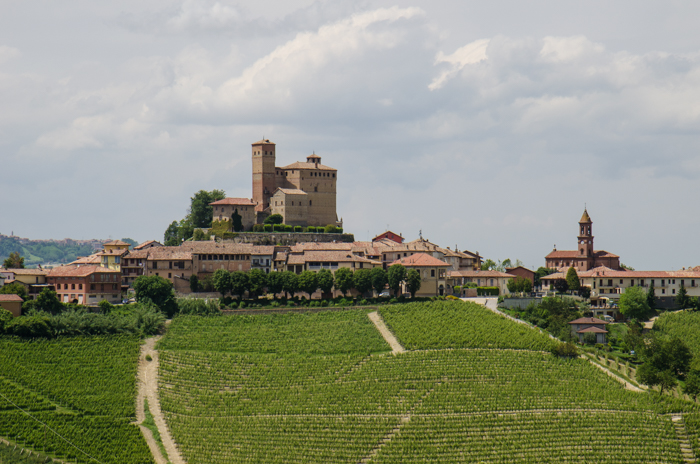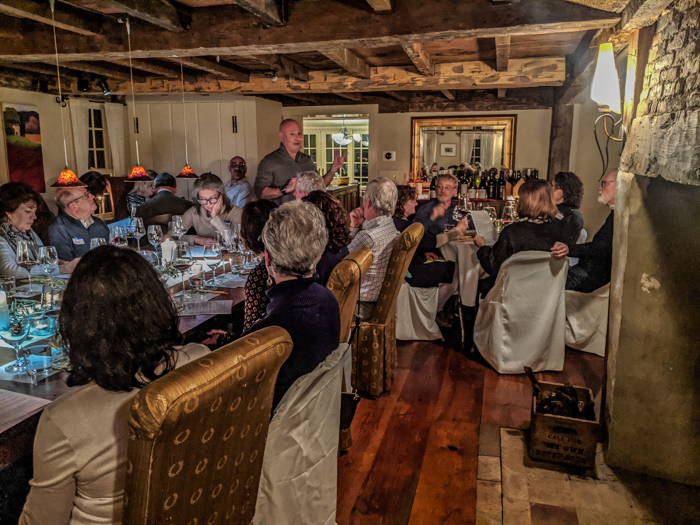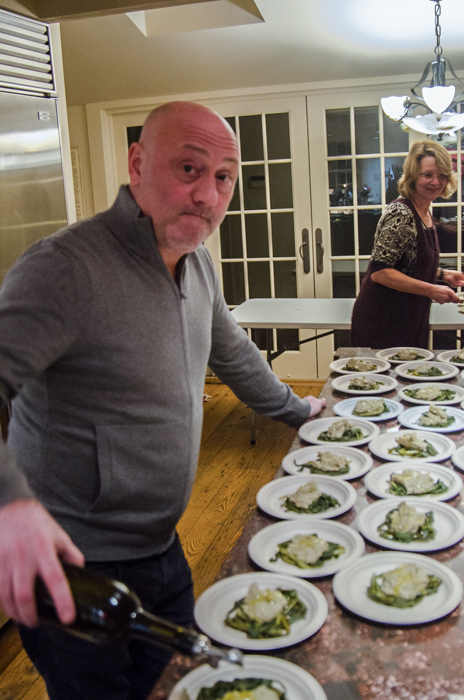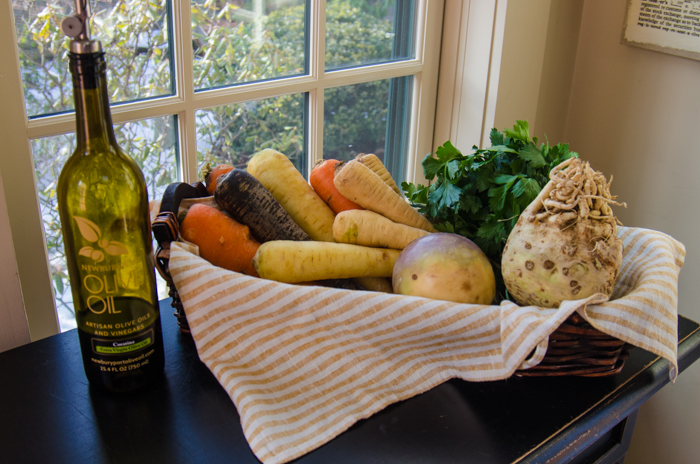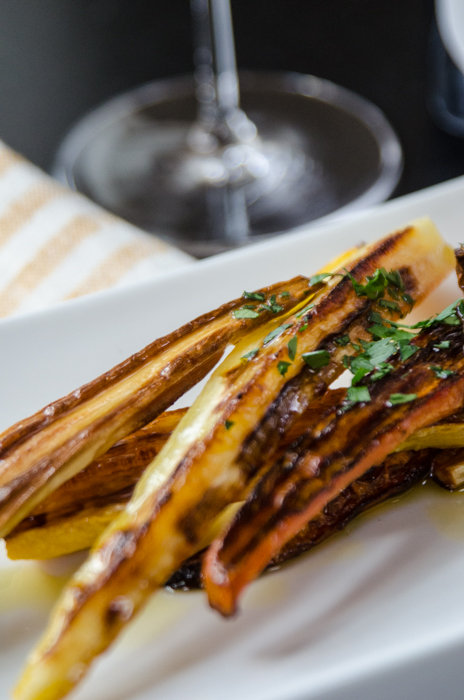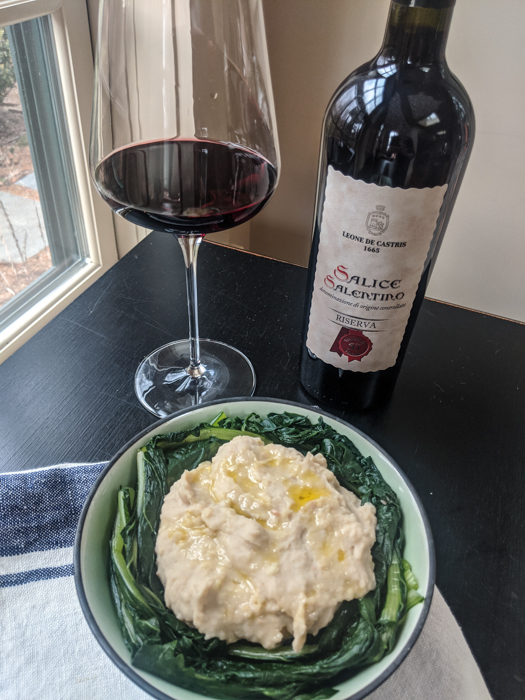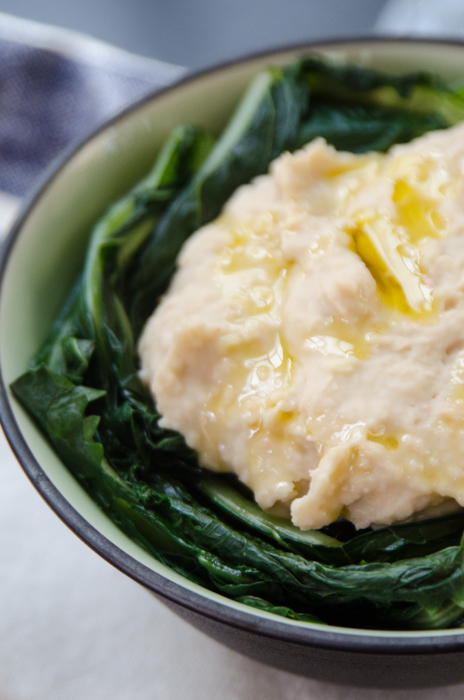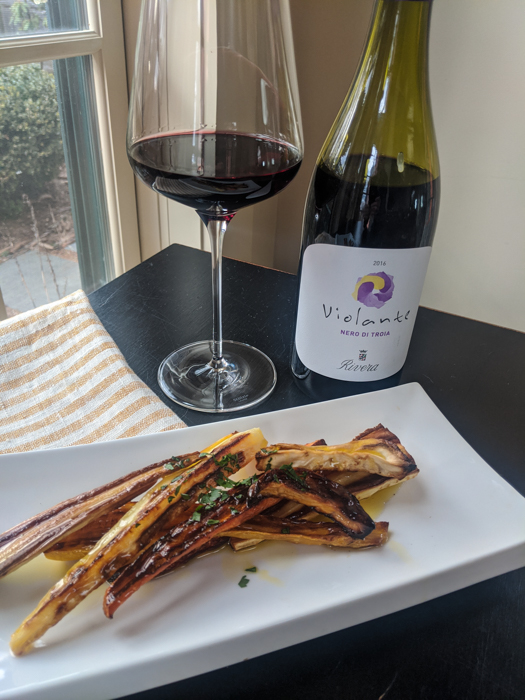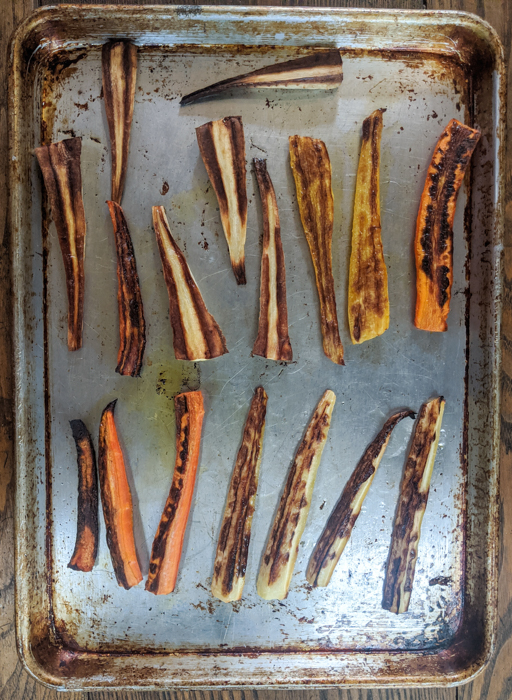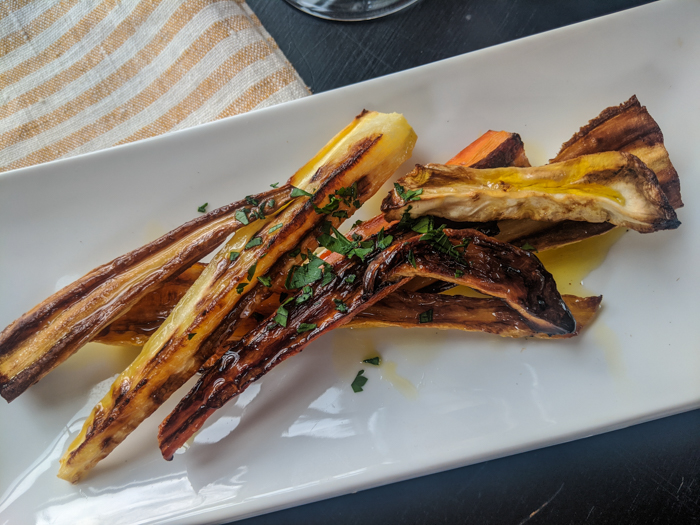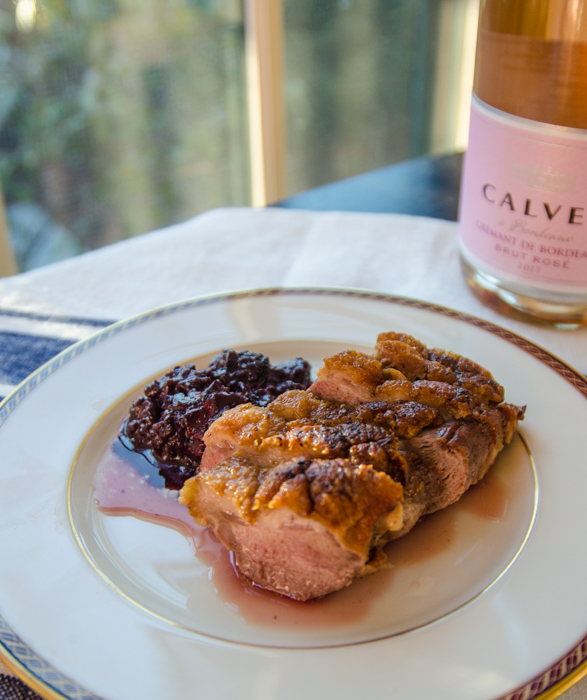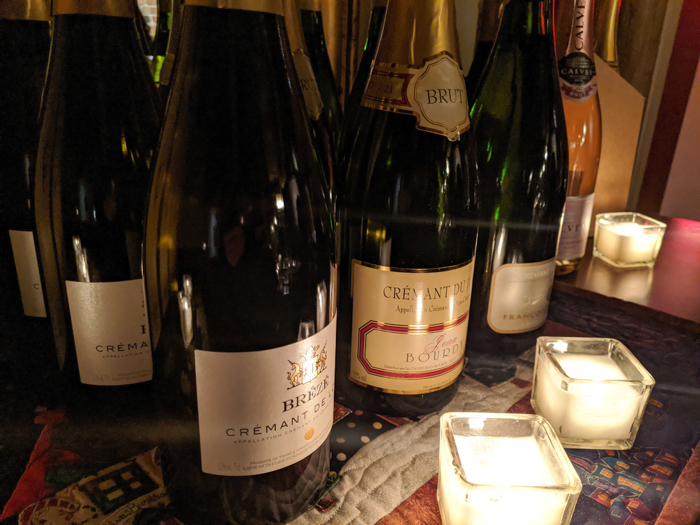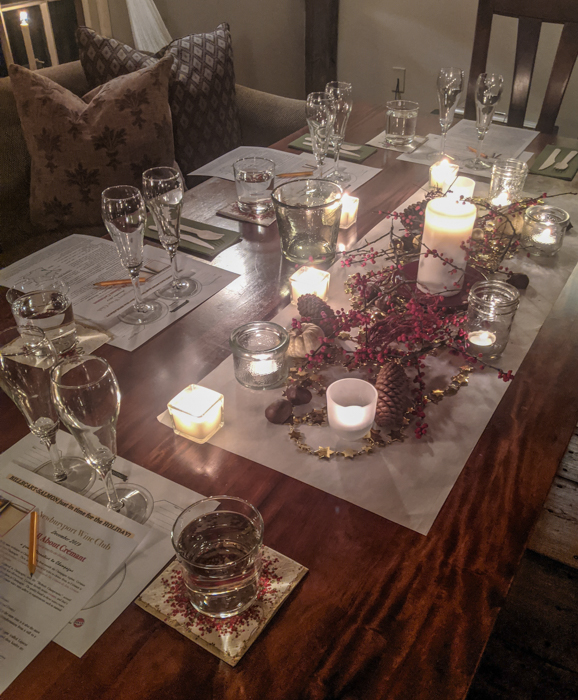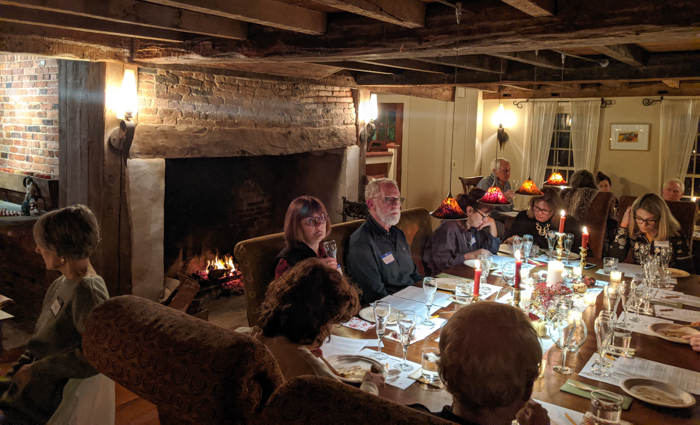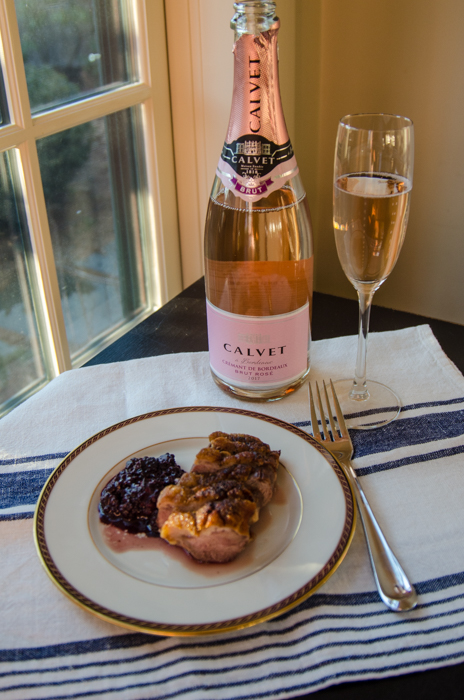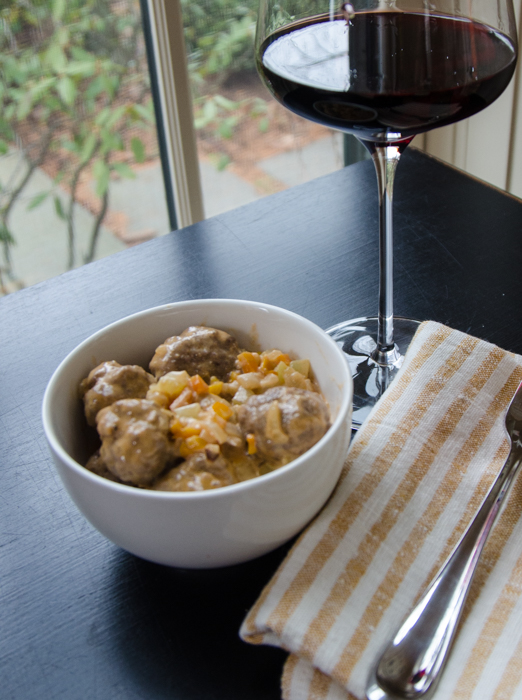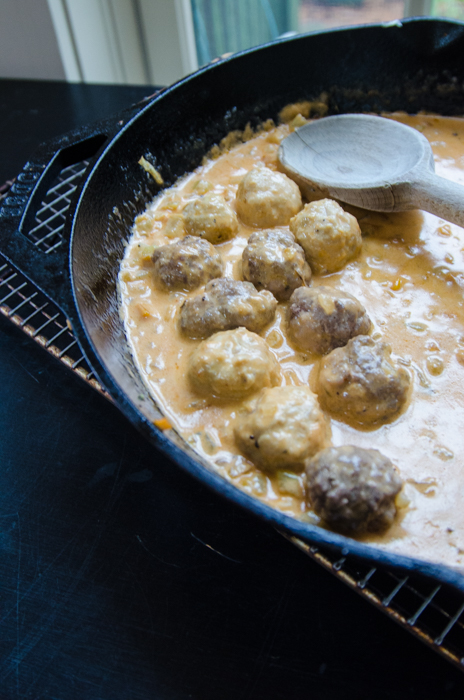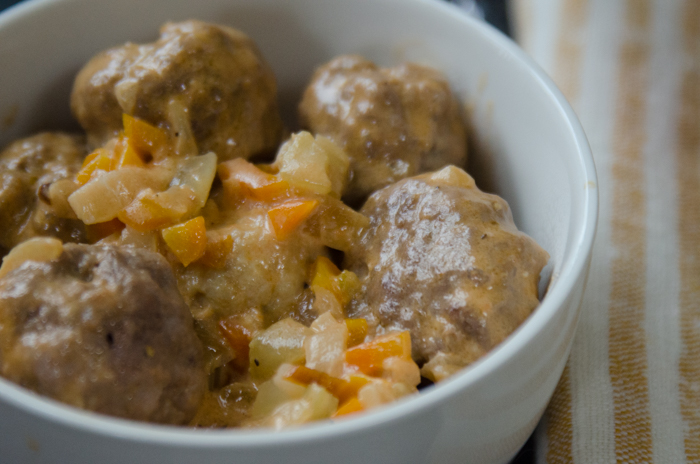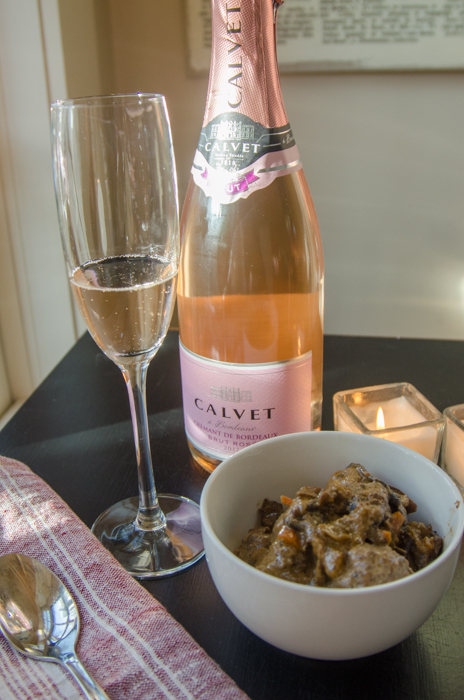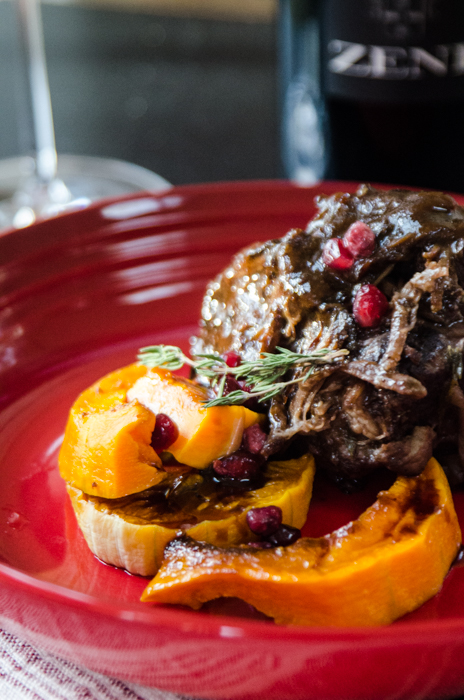
Our February meeting of our Newburyport Wine Club was built around “Wines that Tell a Story of Love.” Of course, you can’t do a theme like this without including wines from the Veneto. We enjoyed a Valpolicella Ripasso from Zeni, and another with Veneto connections, an Amarone inspired appassimento-style wine produced in by Veneto producer Allegrini in Argentina.
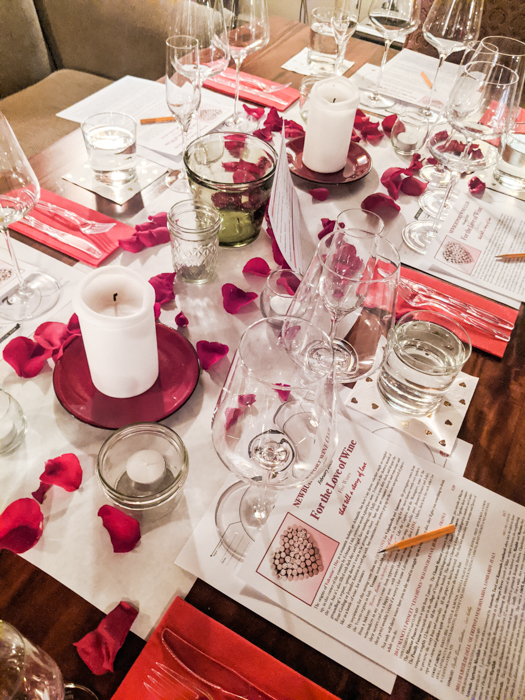
2014 BODEGA RENACER “MILAMORE”, MENDOZA – ARGENTINA $24
45% MALBEC – 40% CABERNET SAUVIGNON – 10% BONARDA – 5% CABERNET FRANC
Built in 2004, Bodega Renacer is located in Lujan de Cuyo, in the foothills of the Andes Mountains. Patricio Reich owns the estate and the wine maker is Pablo Sanchez. In 2004, Reich hired wine consultant Alberto Antonini to work with his winemaker. Through Alberto, Patricio was introduced to Marilisa Allegrini of Allegrini Wines – one of the most respected wineries in the world, located in Veneto. After visiting Patricio’s property, she was so enamored with Mendoza and the potential it has that in 2006 she decided to produce an Amarone style wine called Enamore, the first appassimento-style wine produced in Argentina. It’s name which means “in love” in both Spanish and Italian – was originally chosen as an homage to first impressions.
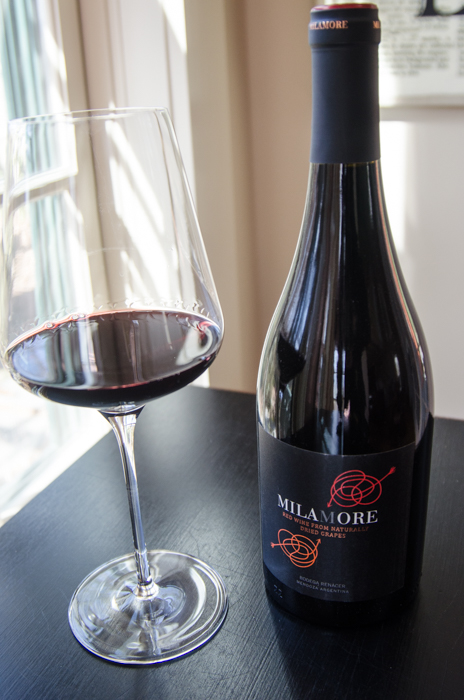
After 10 years, the winemaking team found that their love for this rare wine, and each other, had not diminished over the years, but had only grown stronger. To commemorate the phenomenon that time changes everything, and that what’s truly good only gets better with time, Marilisa and Patricio elected to retitle the “one-love” of Enamore to the new offering of Milamore – which means a thousand loves.
Milamore offers supple aromas of ripe berries, raisin, and plums. Sensual notes of exotic spices, flint and chocolate are seamlessly layered with the fruit. Full bodied, rich and complex, with a long finish beautifully framed by fine-grained tannins.
Pomegranate Braised Short Ribs
5 tablespoons vegetable oil, divided
4 pounds bone-in beef short ribs (8 to 12)
Salt and pepper
All-purpose flour
1 large yellow onion, sliced
3 cloves garlic, smashed and peeled
10 sprigs thyme
3 cups pomegranate juice
1 cup dry red wine, such as Merlot
1/2 cup pomegranate seeds, for serving
Preheat oven to 400 degrees.
Season the ribs with salt and pepper, dust with flour. Place the ribs on a sheet pan and roast in the oven until well-browned on the outside, about 15 minutes. Remove from oven and reduce heat to 275 degrees.
Alternatively, instead of roasting in the oven to brown, you can sear in a heavy pan. If I am making only a few ribs, I sear. If I am making a larger batch, roasting in the oven requires less labor on my part. To sear, in a large heavy pot with a tight-fitting lid, heat 2 tablespoons oil over high. In batches, brown ribs on all sides. Transfer to a plate, pour off oil, and wipe loose bits out of pot.
Once the ribs have been browned, in the same large heavy pot with a tight-fitting lid, heat over medium-high heat and add 3 tablespoons oil to pot. Add onion, garlic, and thyme. Cook, scraping up browned bits with a wooden spoon, until onion is softened, 5 minutes. Whisk in pomegranate juice and wine and bring to a boil, stirring frequently. Return ribs to pot, cover, and transfer to oven.
Bake until ribs are very tender and falling off the bone, about 3-4 hours. Allow to cool, then refrigerate overnight.
To finish the next day, remove from the refrigerator. The fat will have risen to the top and hardened into a solid layer; remove as much as possible and discard. Bring to a boil over medium-high, removing the meat as the sauce warms up. Cook until reduced to a sauce-like consistency, 10 – 20 minutes, depending upon the consistancy you prefer. Remove the thyme sprigs and garlic, you can use a strainer if you wish. Season with salt and pepper, and pour over ribs.
Serve with roasted pumpkin or squash. Top with pomegranate seeds and a drizzle of pomegranate molasses.
If you need to cook and serve the same day, you can. Once the meat is tender, with a slotted spoon carefully transfer ribs to a large platter. Strain liquid into a fat separator, let sit briefly, and return to pot, discarding fat (or, skim off fat with a spoon). Bring to a boil over medium-high and cook until reduced to a sauce-like consistency, 10 minutes. Strain through a fine-mesh sieve, season with salt and pepper, and pour over ribs.
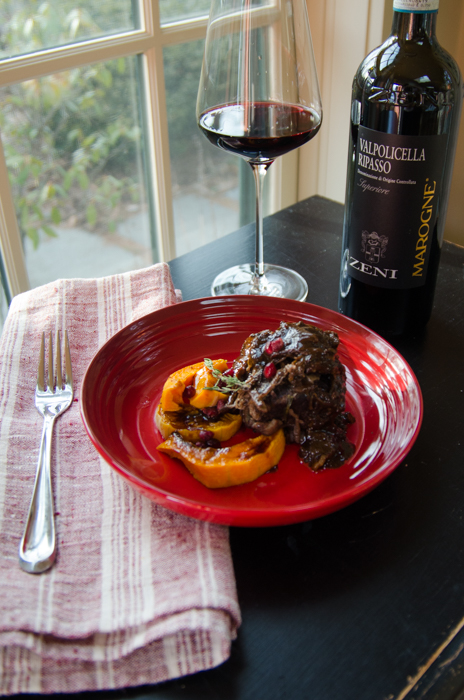
2017 ZENI “MAROGNE” VALPOLICELLA RIPASSO SUPERIORE, VENETO – ITALY $24
60% CORVINA – 30% RONDINELLA – 10% MOLINARA and 14.0% ABV
The Zeni story starts with Bartolomeo Zeni in 1870; painter by passion, but carter by profession, Bartolomeo transported the goods of his region, like fish, olive oil and wine to the villages along the shores of Lake Garda. Bartolomeos’s business was then carried on by his son Gaetano, who began taking his first steps as wine broker. Thanks to Francesco, Gaetano’s eldest son, the Zeni family’s offspring inherited not only the family name, but also the strong passion for farming. Gaetano’s sons recognized a rapidly expanding market, especially abroad and thus completely changed the company’s focus – the production of quality wine. That philosophy, like the bond with the land, the passion for the vineyard, and for the love of the generations before is pursued with the same enthusiasm and dedication by 5th generation – Fausto, Elena and Federica Zeni.
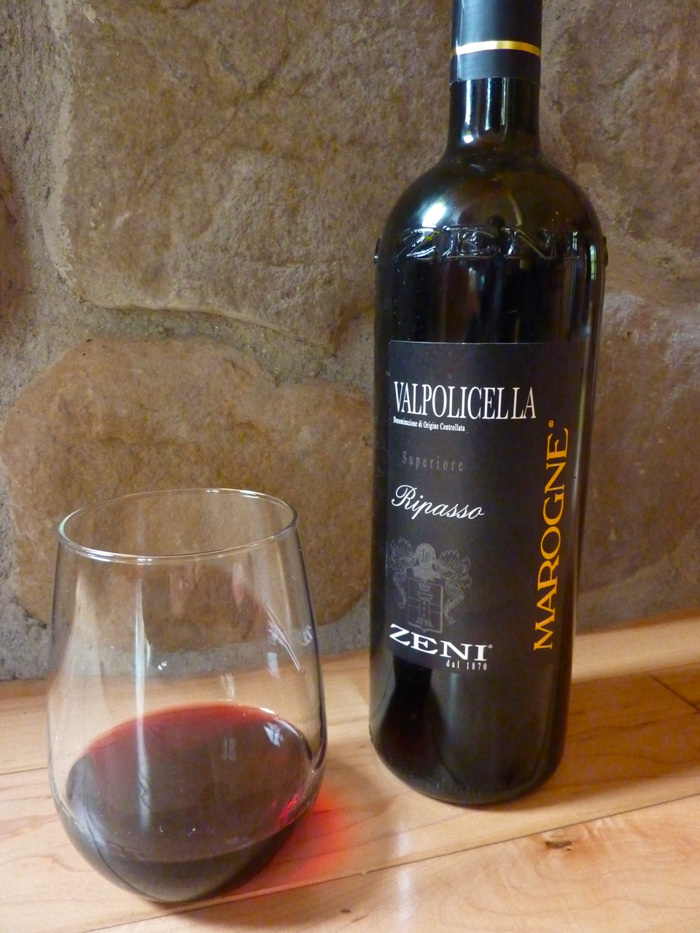
A percentage of the grapes for this Valpolicella is hand harvested early, in small racks and left to dry before being vinified with the rest of the grapes picked later in the harvest. After fermentaion the un-pressed Amarone skins are added to the Valpolicella wine for a “re-passing” and remains in contact with the pumace of Amarone for 10 – 12 days, during this period a second fermentation takes place. This “Ripasso” method gives to Valpolicella wine a better structure and a lower acidity. This wine is highly aromatic with hints of black cherry and well-ripened fruit. The palate is well rounded, velvet soft and full-bodied with a long and lingering finish.
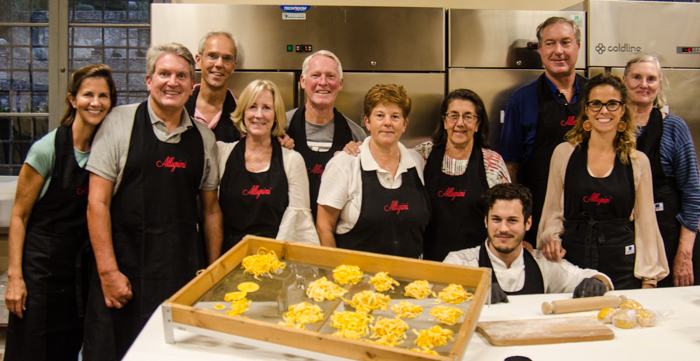
I paired this wine with a Risotto alla Valpolicella, following the recipe below that we made during a wonderful cooking class at Allegrini’s Villa della Torre wine resort (the same Allegrini mentioned in the next recipe). I’ve included both the original instructions, plus my version, as I find the original Italian fun to read, but a bit challenging to follow!
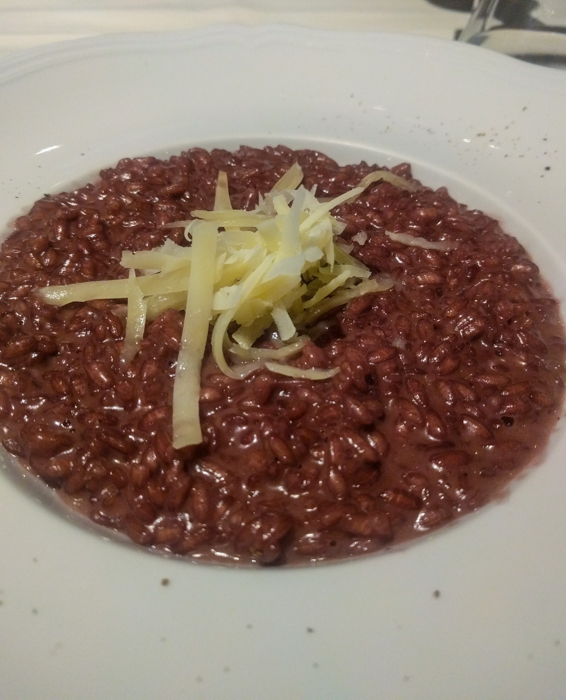
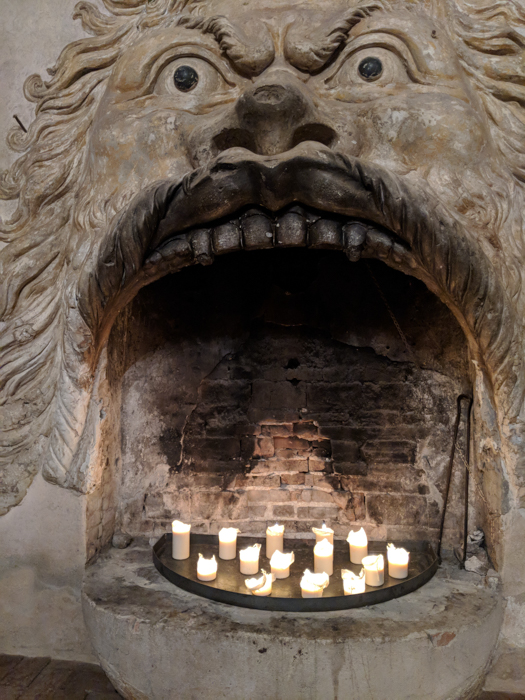
Risotto All’Amarone
Serves 4 persons
1/2 cup/100 g minced white onion
3 tablespoons/40 g butter
2 tablespoons/30 g of beef marrow (optional)
1 1/2 cups/320 g Vialone Nano, Arborio or Cannaroli rice
1/2 bottle Amarone or Valpolicella
4 cups beef broth, unsalted
Kosher salt
1/2 cup/60 g grated Grana Padano or Parmigiano Reggiano cheese
Allegrini Instructions:
Finish the onion finely and fry it in a saucepan with 20 g of butter, pour the crushed marrow and cook for five minutes on a low flame. Add the rice, let it toast for a few minutes at medium flame and then pour the appropriately preheated Amarone. Continue cooking the risotto by slowly combining the hot soup ladle with the rice as it requires it.
Take the rice to the best cooking, never stop mixing with the wooden ladle, season with little salt. When the cooking is fine, add the remaining Amarone and, if needed, a large amount of broth. In the end, keep the risotto with the remaining butter and 60 g of grated cheese. Let it rest for a minute and serve in a basket of grain cake prepared in the following world; Pour in a preheated frying pan the remaining grated garnish, let it melt and help with a wooden pallet to lift the leaf that is formed. Pour it quickly on the dish and model it with the basket.
My Instructions:
Put the broth and wine in two separate saucepans and heat until warm.
Place half the butter in a large saute pan and heat over medium low heat. Add the marrow, if using, and the onion and cook until the onion is tender and translucent, about 5 minutes.
Add the rice, and cook for a few minutes to toast slightly, about 2 minutes. Add the preheated wine and simmer, when it has evaporated completely, begin to stir in the hot broth. Add a ladleful of the hot stock and simmer, stirring gently, until the stock is absorbed. Continue adding the stock a ladleful at a time, stirring and waiting until the stock is absorbed before the next addition of stock. Continue until the rice is al dente. The stock may not all be used.
When the risotto is done, stir in the grated cheese and butter and season with salt to taste. Serve immediately.
